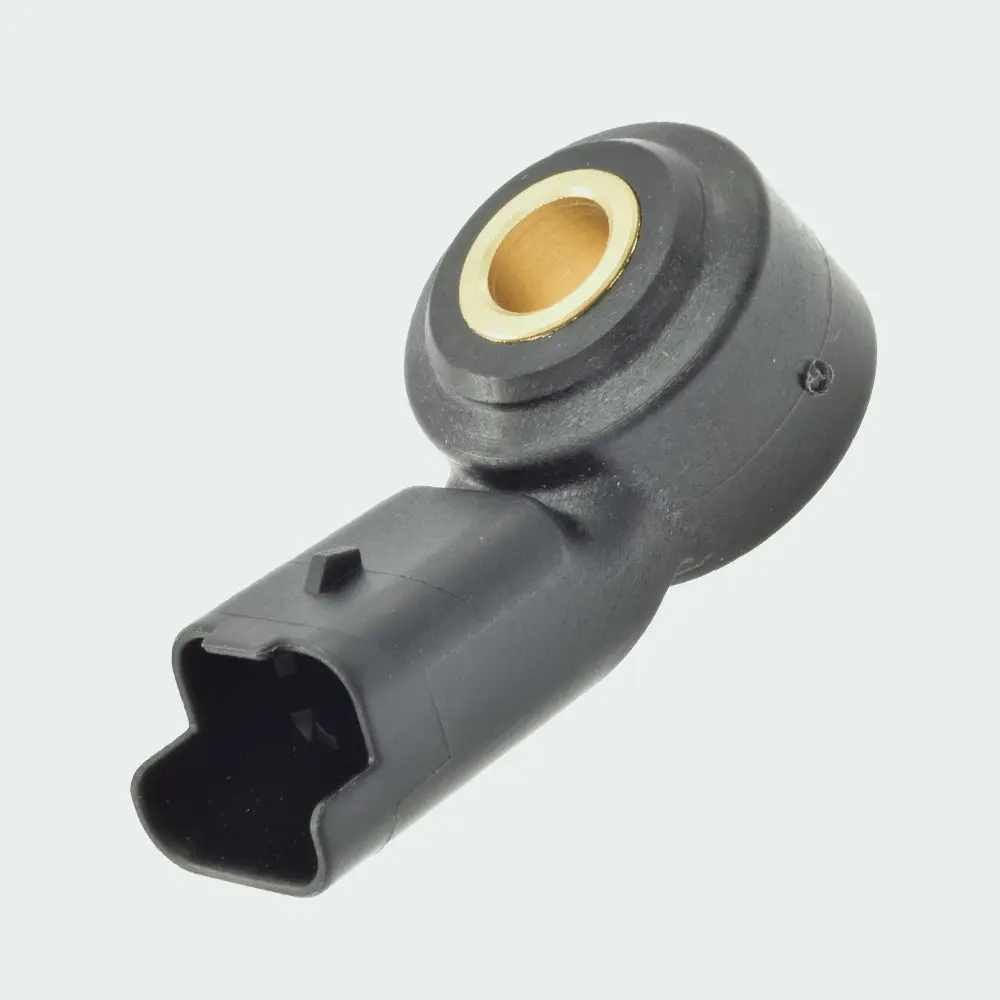VXPRO Lambda Sensors are manufactured to OE standards for accuracy, response time, and long-term durability. These essential emissions control components help optimise fuel combustion, improve engine performance, and ensure compliance with Euro 4, 5, and 6 regulations. With wide coverage for both upstream (pre-cat) and downstream (post-cat) applications, VXPRO delivers trusted solutions for the independent aftermarket.
Backed by a 5-year warranty and supported by TechASSIST and StockASSIST, VXPRO Lambda Sensors enable garages to diagnose emissions issues with confidence, complete first-time repairs, and Champion the Aftermarket.

With multiple sensors per vehicle and rising MOT emissions failures, lambda sensors are a top-selling category. StockASSIST helps you maintain a focused, high-demand stock profile based on UK vehicle parc data and replacement trends.
Here are 10 of the most requested VXPRO lambda sensor references in our UK range:

EX0028
VXPRO Lambda Sensor (Oxygen Sensor)

EX0028
Replaces:
5855391, 25198481, 55562206, 55568266
Applications:
Opel Adam, Astra, Cascada, Corsa, GTC, Insignia, Meriva, Mokka X, Mokka, Zafira Tourer
Vauxhall Adam, Astra, Cascada, Corsa, GTC, Insignia, Meriva, Mokka X, Mokka, Zafira Tourer

EX0001
VXPRO Lambda Sensor (Oxygen Sensor)

EX0001
Replaces:
55561863, 855351, 855386, 855405, 855406, 855528, 93193419, 13103981, 24420594, 9129954, 9192922, 9199470, 93177450, 93177451, 93186800, 93190419
Applications:
Opel Agila, Astra, Combo, Corsa, Meriva, Omega, Signum, Tigra, Vectra
Vauxhall Agila, Astra, Combo, Corsa, Meriva, Omega, Signum, Tigra, Vectra

EX0002
VXPRO Lambda Sensor (Oxygen Sensor)

EX0002
Replaces:
SPD5551, SPD5552, XR3F9G444BA, 1035595, 1053108, 1067580, 1088851, 1108640, 1113382, 1137891, 1143514, 1148070, 1208560, 1215538, 1300544, 1471423, 1516718, 1527105, 1619640, 1639714, 1673837, 1673972, 1682753, 1743702, 1746710, 1746711, 1R839G444AA, 256A9F472BB, 2S6A9F472BB, 2S6A9G444BA, 2S7A6G444BA, 2S7A9G444BA, 3010660, 3011099, 3017524, 3721930, 3S4A9G444AB, 3S7A9G444CA, 4594661, 8S6A9F472AA, 8V219F472AB, 8V219F472AC, 8V219G444AA, 8V219G444AB, 8V219G444AC, 98AB9F472BB, 98AB9G444BB, 98FB9F472BB, 98FB9F472CA, 98FB9F472DA, 98FB9G444CB, AE819G444BA, AE819F472AA, AE819F472AB, AE819G444AA, AE819G444AB, AE819G444AC, AE819G444AD, AE819G444BB, AE819G444BC, F39F9F472BB, KNL158, S108748001, S108748007A, S108748105A, S108748106A, XC2F9F472A1A, XC2F9F472AA, XR3F9G444A1A, XR3F9G444AA, XR3F9G444B1A, XR3F9G444BB, XR822998, XS6A9F472AC, YS6A9F472AC, IR839G444A1A, XR81557, XR82007, XR86938, 1E0418861, C60118861, 30731563
Applications:
Aston Martin DB7
Ford B-MAX, Cougar, Fiesta, Focus, Fusion, Galaxy, Ka+, Ka, Mondeo, Puma, Transit Connect
Mazda 2
Volvo C30, S40

EX0454
VXPRO Lambda Sensor (Oxygen Sensor)

EX0454
Replaces:
9673438580
Applications:
Citroen C3, C4, DS3
DS DS3
Peugeot 108, 208, 308, 2008

EX0417
VXPRO Lambda Sensor (Oxygen Sensor)

EX0417
Replaces:
55563348, 855235
Applications:
Chevrolet Aveo, Cruze, Orlando, Trax
Opel Adam, Astra, Cascada, Corsa, GTC, Insignia, Meriva, Mokka X, Mokka
Vauxhall Adam, Astra, Cascada, Corsa, GTC, Insignia, Meriva, Mokka X, Mokka

EX0008
VXPRO Lambda Sensor (Oxygen Sensor)

EX0008
Replaces:
11787548961, 7548961, 1618V3, 1628NY, 754896180, 9636968380, V754896180, 754896103
Applications:
Citroën Berlingo, C2, C3, C4, C5, DS3, DS4, DS5, Nemo, Saxo, Xsara
Mini MINI
Peugeot 106, 206, 207, 208, 306, 308, 508, 1007, 2008, 3008, 5008, Bipper, Partner, RCZ

EX0020
VXPRO Lambda Sensor (Oxygen Sensor)

EX0020
Replaces:
11787560957, 11787590713, 759071303, 1609345480, 1618LL, 1618V0, 1918LL, 759071302, V759071380
Applications:
Citroën Berlingo, C3, C4, DS3, DS4
Mini MINI
Peugeot 207, 208, 308, 2008, 3008

EX0011
VXPRO Lambda Sensor (Oxygen Sensor)

EX0011
Replaces:
55353811, 71744403, 71748280, 855358, 855422, 855426, 855553, 855554, 09202577, 55353812, 9202577, 93185456, 93185493
Applications:
Alfa Romeo 159
Fiat Croma
Opel Astra, Omega, Signum, Vectra, Zafira
Vauxhall Astra, Omega, Signum, Vectra, Zafira

EX0003
VXPRO Lambda Sensor (Oxygen Sensor)

EX0003
Replaces:
855359, 855387, 855402, 855404, 883271, 24420591, 91202621, 9129968, 9193654, 9199590, 93177169, 93177187, S25162753, S93177169
Applications:
Opel Agila, Astra, Corsa, Meriva, Omega, Tigra
Vauxhall Agila, Astra, Corsa, Meriva, Omega, Tigra

EX0037
VXPRO Lambda Sensor (Oxygen Sensor)

EX0037
Replaces:
55199542, 55275929, 11787537984, 753798403, 753799303, 12620176, 84286040, 05149012AA, 5149012AA, 5149063AA, 1618AV, 1618KN, 1618NE, 9681852780, 9687161080, 1618LT, 1618V7, 0055189996, 00551899960, 55182912, 55189996, 551899960, 1701766, BG919D375AA, 855506, 36531RL0G01, 36531RZ0G02, 36531RZ0G020, 36531RZ0G020M5, 393502A420, 393504A410, 0000504135503, 504135503, 0035426918, 0045426918, 158A001, 45426918, A0035426918, A0045426918, 1588A001, 2269000Q0L, 226935X20A, 5855396, 93179226, 226A42455R, 226A49071R, 8201028297, 89467YV010, 30751138
Applications:
BMW 1 Series, 3 Series, 5 Series, 6 Series, 7 Series
Cadillac BLS
Citroen Berlingo, C3, C4, C5, C6, Dispatch, DS3, DS4, DS5, Relay
Dodge Nitro
DS DS5
Fiat Bravo, Croma, Ducato, Grande Punto, Stilo
Ford Galaxy, Mondeo, S-MAX
Hyundai Getz, i20, i30, i40, i800, iLoad, ix20, ix35, Tucson
Iveco Daily
Jeep Cherokee, Commander
Kia Carens, Ceed, Cerato, Optima, Pro Ceed, Rio, Sorento, Soul, Sportage, Venga
Mercedes Benz A Class, B Class, C Class, CLK Class, CLS Class, E Class, G Class, GL Class, M Class, R Class, S Class, SLK Class, Sprinter, Viano, Vito
Mini MINI
Mitsubishi Colt
Nissan Navara, Qashqai
Opel Astra, Insignia, Signum, Vectra, Zafira
Peugeot 207, 208, 308, 407, 508, 607, 2008, 3008, 5008, Boxer, Expert, Partner, RCZ
Renault Kadjar, Koleos, Master, Megane, Scenic, Trafic
Saab 9-3, 9-5
Smart Forfour, Fortwo
Toyota Auris, Avensis, RAV-4, Verso
Vauxhall Astra, Insignia, Signum, Vectra, Zafira
Lambda sensors are exposed to extreme heat, soot, and chemical contaminants. Failure is often caused by:
Age-related wear — most sensors degrade over 60,000 to 100,000 miles
Contamination from oil, coolant, or fuel additives
Wiring damage or water ingress in connectors
Sensor tip damage during exhaust or engine work
Exhaust leaks upstream of the sensor, skewing readings
Poor fuel economy due to rich or lean running
Rough idle or hesitation during acceleration
Check Engine Light (MIL) illuminated — often with codes like P0130–P0175
Failed emissions tests (MOT)
Increased exhaust emissions, including CO, HC, and NOx
Delayed or failed DPF regeneration in diesel applications
Always verify sensor position (upstream/downstream, bank 1/bank 2) before fitting
Apply anti-seize compound to threads, but avoid contaminating the tip
Check the connector and wiring for heat damage before installation
Tighten to manufacturer torque spec to avoid sensor or thread damage
Clear all fault codes and monitor live data for switching function and response time
Crank Angle Sensors (Crankshaft Position Sensors)
Deliver exact crankshaft data for precise ignition timing and smooth engine operation

Knock Sensors
Detect engine knock to adjust ignition timing and prevent damage

Exhaust Gas Recirculation (EGR) Valves
Recirculate exhaust gases to reduce emissions and improve combustion efficiency with VXPRO
